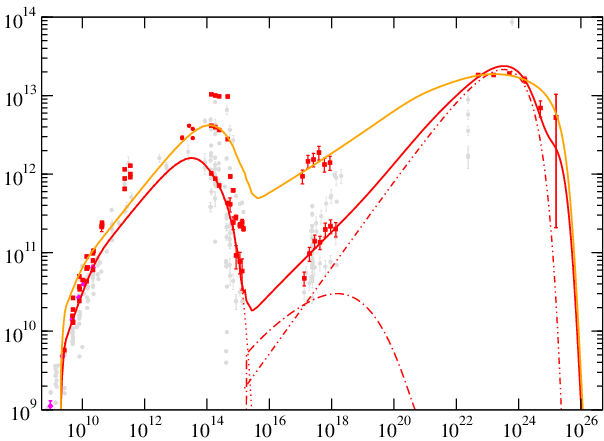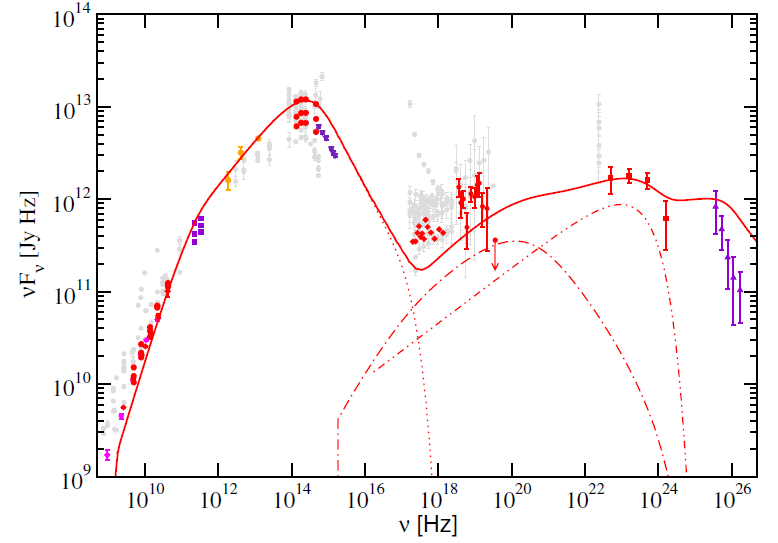Source modeling results: BL Lacs
Leptonic Model

Hadronic Model

AO
0235+164
Leptonic Model

Hadronic Model

BL
Lacertae
Leptonic Model

Hadronic Model

S5
0716+714
Leptonic Model

Hadronic Model

OJ287
Leptonic Model

Hadronic Model

W
Comae
Leptonic Model

Hadronic Model

3C
66A
Conclusions:
One-zone leptonic models for the BL Lac objects (LBLs, IBLs) in the studied sample provide acceptable fits in about 1/2 of all cases. Problematic is here the often observed rather hard gamma ray spectrum whereas the broadband modeling gives rather soft gamma ray spectra due to Klein-Nishina effects. External target photon fields are required in all cases for those fits. Parameters are close to equipartition between magnetic fields and electrons. The overall required jet power is dominated by cold protons.
One-zone hadronic models for the BL Lac objects (LBLs, IBLs) in the studied sample provide acceptable fits in 2/3 of all cases. Although hadronic model fits tend to produce harder spectra in the gamma ray band than leptonic models do, the here used code restrictions do not support an additional high energy component at gamma ray energies which could explain the sometimes observed upturn at high gamma ray energies. External target photon fields are not used here. The overall required jet power is very high (up to 10^49 erg/s), and is particle dominated.
Overall Conclusions:
There seems a slightly higher probability to explain the broadband SED of high luminosity BL Lac objects with hadronic emission models although the nature and overall required jet power seems problematic. The observation of exceptionally hard gamma-ray spectra together with steep IR-opt-UV synchrotron spectra could serve as a key observational (if restricted to photons) diagnostic for hadronic interactions.
These results are published in: Boettcher, Reimer, et al. 2013, ApJ, 768, 54.
For questions and/or comments please contact: A. Reimer anita.reimer@uibk.ac.at.